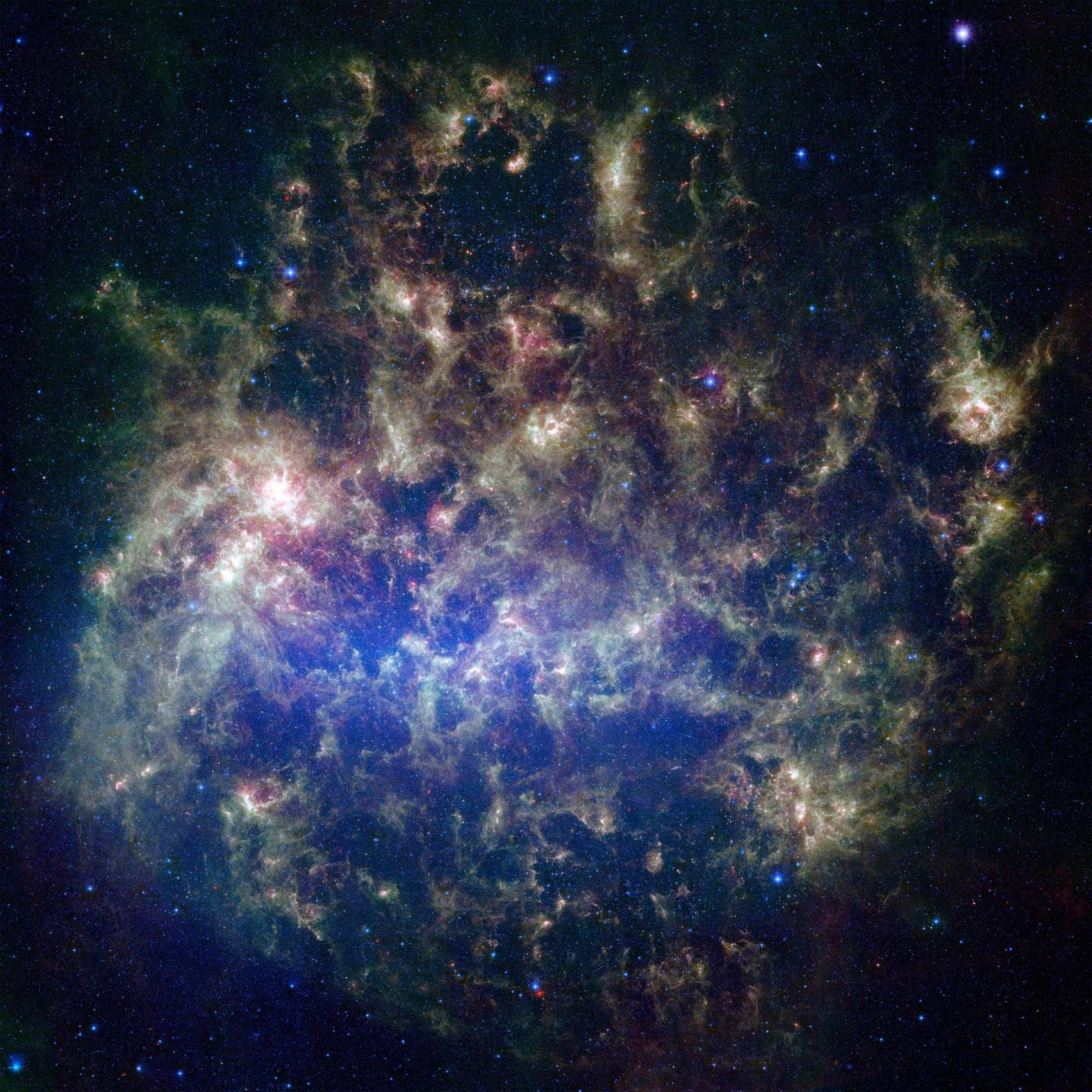Our Milky Way is weird – but a catastrophe will soon straighten everything out
Our home galaxy, the Milky Way, is, we must unfortunately admit, rather an oddball specimen of a spiral galaxy. The black hole at its center is underdeveloped (it is too light by a whole order of magnitude), it is surrounded by a (too) low mass halo of stars with extremely low metal content, and it has an unusually large companion, the Large Magellanic Cloud (LMC).
But there is some good news, as astronomers report in a recent paper: in just 2.4 billion years (the universe is currently 13.8 billion years old), a gigantic collision will even out these odd characteristics. One possible result is that our Solar System might be flung out of the Milky Way, but minor inconveniences must be expected when such large collisions occur.
The cause of this collision will be the Large Magellanic Cloud. Today, it and its 15 billion stars are still moving through space at a distance of 163,000 light-years from the Milky Way. It was previously thought that it would continue to orbit around our galaxy for a long time, but apparently twice as much dark matter is hiding in it than previously thought. And that means there’s now a real threat of a collision with our Milky Way.
As a computer simulation of the projected future shows, the collision will make the Milky Way’s central black hole, Sagittarius A*, swell to eight times its current size and transform it into an active galactic nucleus that will flood its surroundings with radiation. The halo will then become five times as heavy as today, and most of the stars of the LMC will be integrated into our Milky Way. At the same time, however, stars will also be flung out of the Milky Way into the surrounding halo – if our descendants are unlucky, the Solar System will be among those stars that are ejected. If that happens, though, we won’t know until it’s too late. The Milky Way will then become a model example of a spiral galaxy, at least for a few billion years, before its beautiful spiral form will again be disrupted by another collision (this time with the Andromeda Galaxy).

